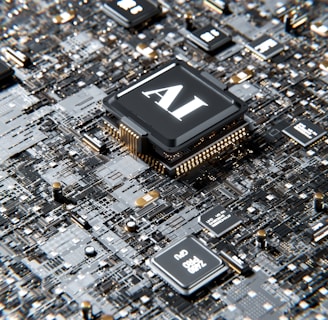Will AI and Automation Replace Manual Testing?
In today's rapidly evolving technological landscape, AI and automation are revolutionizing various industries, and software testing is no exception. As organizations strive to deliver high-quality software faster, the role of AI and automation in testing has become increasingly significant. But will these advancements completely replace manual testing? Let's explore this question by examining the current state of AI and automation in software testing, their benefits, limitations, and the future of manual testing.
TECH
Sumit Rana


The Rise of AI and Automation in Software Testing
Artificial Intelligence (AI) and automation have transformed software testing by enhancing efficiency, accuracy, and speed. Automation testing tools like Selenium, QTP, and TestComplete automate repetitive tasks, reducing the time and effort required for manual testing. AI further augments this by incorporating machine learning algorithms to predict potential bugs, optimize test cases, and even generate code.
According to a report by MarketsandMarkets, the global automation testing market size is expected to grow from $12.6 billion in 2019 to $28.8 billion by 2024, at a Compound Annual Growth Rate (CAGR) of 18.0%. This growth is driven by the increasing adoption of AI and machine learning in testing processes.
Benefits of AI and Automation in Testing
Speed and Efficiency: Automated tests can run 24/7 without human intervention, significantly reducing testing time. This is crucial for continuous integration and continuous deployment (CI/CD) pipelines, where rapid feedback is essential.
Accuracy and Consistency: Automation eliminates human errors, ensuring consistent test execution and more reliable results. AI-powered tools can also identify patterns and anomalies that might be missed by human testers.
Scalability: Automation allows for extensive test coverage by running multiple test cases simultaneously across different environments and configurations. This scalability is particularly beneficial for large-scale projects.
Cost-Effectiveness: While the initial investment in automation tools and AI technologies can be high, the long-term savings in time and resources often justify the cost. Automated tests can be reused across different projects, further reducing expenses.
Limitations of AI and Automation
Despite the numerous advantages, AI and automation in testing have their limitations:
Complexity in Test Case Design: Automated tests require well-defined test cases and scripts. Designing these can be complex and time-consuming, especially for dynamic and exploratory testing scenarios.
Maintenance Overhead: Automated test scripts need regular updates to accommodate changes in the application under test. This maintenance can become a significant overhead, particularly for projects with frequent updates.
Limited Contextual Understanding: AI and automation tools lack the intuitive understanding and contextual knowledge that human testers bring to the table. They may struggle with user experience (UX) testing, usability testing, and other subjective aspects.
Initial Investment: Implementing AI and automation requires a substantial initial investment in tools, infrastructure, and training. This can be a barrier for smaller organizations with limited budgets.
The Future of Manual Testing
While AI and automation are transforming software testing, they are unlikely to completely replace manual testing. Instead, they will complement and enhance the capabilities of human testers. Here are a few reasons why manual testing will continue to be essential:
Exploratory Testing: Manual testing is invaluable for exploratory testing, where testers actively explore the application to identify defects. This requires creativity, intuition, and domain knowledge that AI cannot replicate.
Usability and User Experience (UX) Testing: Evaluating the usability and overall user experience of an application requires human judgment and empathy. Manual testers can provide insights into how real users interact with the software, which is crucial for user-centric design.
Adapting to New Technologies: As new technologies and frameworks emerge, manual testing provides the flexibility to quickly adapt and test new functionalities without waiting for automation scripts to be developed.
Human Oversight: Even with advanced AI and automation, human oversight is necessary to validate test results, interpret anomalies, and make informed decisions. Testers bring critical thinking and problem-solving skills that are essential for comprehensive testing.
AI and automation are undoubtedly transforming software testing, offering significant benefits in terms of speed, efficiency, and accuracy. However, they are not a panacea. Manual testing remains indispensable for exploratory, usability, and UX testing, where human intuition and judgment are paramount. The future of software testing lies in a harmonious blend of AI-driven automation and skilled human testers, working together to ensure the highest quality software.
Incorporating AI and automation into your testing strategy can lead to more efficient and effective testing processes, but it's essential to recognize the unique strengths that manual testing brings to the table. By leveraging the best of both worlds, organizations can achieve superior software quality and deliver exceptional user experiences.
©2023- 2025 Techieleo Digital Services Pvt. Ltd. All rights reserved.
